Skating and Romance
Wednesday, January 31, 2018 by
Though today it’s more commonly associated with family recreation, public ice skating in New York City was once a field of ripe romantic possibility.
New Yorkers’ love affair with ice skating began in the winter of 1858/59 in Central Park. In December 1858, before the park was officially completed, the newly-dug Lake at 72nd street was flooded, frozen and declared open for skating. First hundreds, then thousands, and then tens of thousands of curious skaters trekked uptown and took to the ice – women included. “Skating mania” seized the city.
One of the very few recreational options open to women at the time, skating was widely regarded as a healthy, cheap and “innocent” form of outdoor exercise for both sexes (and all ages) -- good for strengthening the body and clearing the mind. But no doubt a powerful factor in skating’s popularity was that for the buttoned-up Victorians, skating was one of the few activities where women and men might enjoy close and chance encounters in public. Popular Victorian prints and paintings of skating in the city featured couples in various stages of flirtation and courtship -- all while showing off the latest fashions. In the 1862 print below by Currier & Ives, from left to right we see a young man desperately pursue his love (whose bloomers are showing), then a grounded, confident pair holding hands in the middle, followed by a middle-aged man pushing his partner on a chair, and finally, a rather well-fed couple watching their children learn to skate.
In an era of constant chaperones, the prospect of gliding and possibly falling on the ice – or falling into someone’s arms – had to be exhilarating. Young women could move around the ice while their older chaperones watched from a distance in warming huts, and married women could skate with other men. While off-ice propriety dictated floor-length skirts, women skating could wear slightly shorter skirts that showed off their ankles, then considered an erogenous zone. Gliding together in tandem, pulling apart but then coming back together for a twirl, an embrace, or even a fall, offered inherently romantic possibilities. Maybe that’s one reason why the “Ladies’ Pond” (established in 1858 and barring unaccompanied men) did not last long. The skaters preferred mixed company, and so that small, separate area of the lake was abandoned circa 1870.
New York periodicals like Harper’s Weekly and Leslie’s Illustrated Weekly depicted skating scenes and escapades around the city with a winking tone. An unsigned, three-stanza poem called “The Ball is Up” that ran in a February 1862 issue of Harper’s claimed skating as a natural field for romance, warning readers: That the Ice is a spell you will learn full well, more potent than ballroom floor."
Paintings and prints from the 1860s show New Yorkers gliding like peacocks on ice in top hats and form-fitting waistcoats, fur muffs, velvet bonnets, and voluminous skirts. Accompanying the skating were live bands playing waltzes, refreshment stands, and warming huts where one could rent skates or simply watch the show. On weekends, the park stayed open until midnight, the scene brilliantly lit by calcium or gas lamps, and ideally, moonlight, as in John O'Brien Inman's 1878 scene of skating on the Lake next to the newly completed Bethesda Terrace.
With the advent of indoor rinks in the 1880s, new romantic possibilities and “dangers” arose. The New York Times noted disapprovingly in 1880 that “…in the close and comparatively unwholesome atmosphere of a skating rink, supplied with artificial ice, [the activity] loses much of its attractiveness” (2/28/1880). The hothouse atmosphere of the indoor rink is palpable in the print below from Harper’s Weekly, which depicts a fashionable young crowd at the St. Nicholas Rink (opened in 1896) on West 66th street. The female skaters look as determined as the male in their social pursuit, whether racing around the rink or perched on the sidelines.
Not until the 1930s and '40s, which saw a golden age of skating revues – professional floor shows performed on small "tank" rinks in Midtown nightclubs and hotels – would skating in the city seem as romantic or alluring again.
These and more images were part of the exhibition New York on Ice: Skating in the City, on view December 20, 2017, through April 15, 2018.
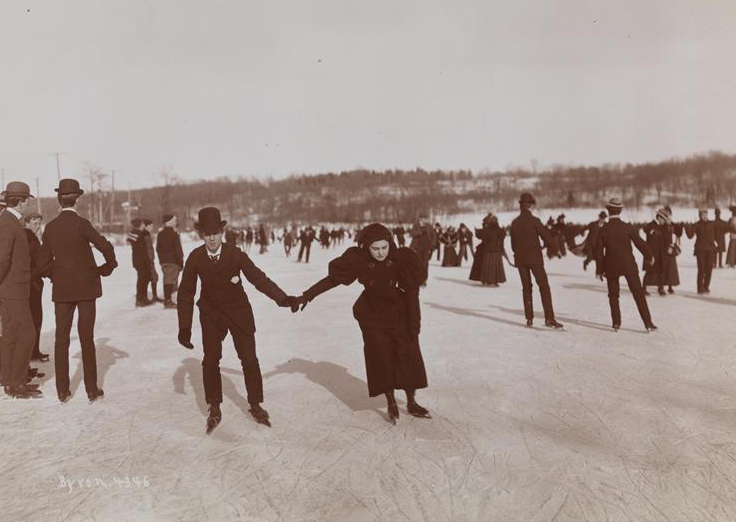
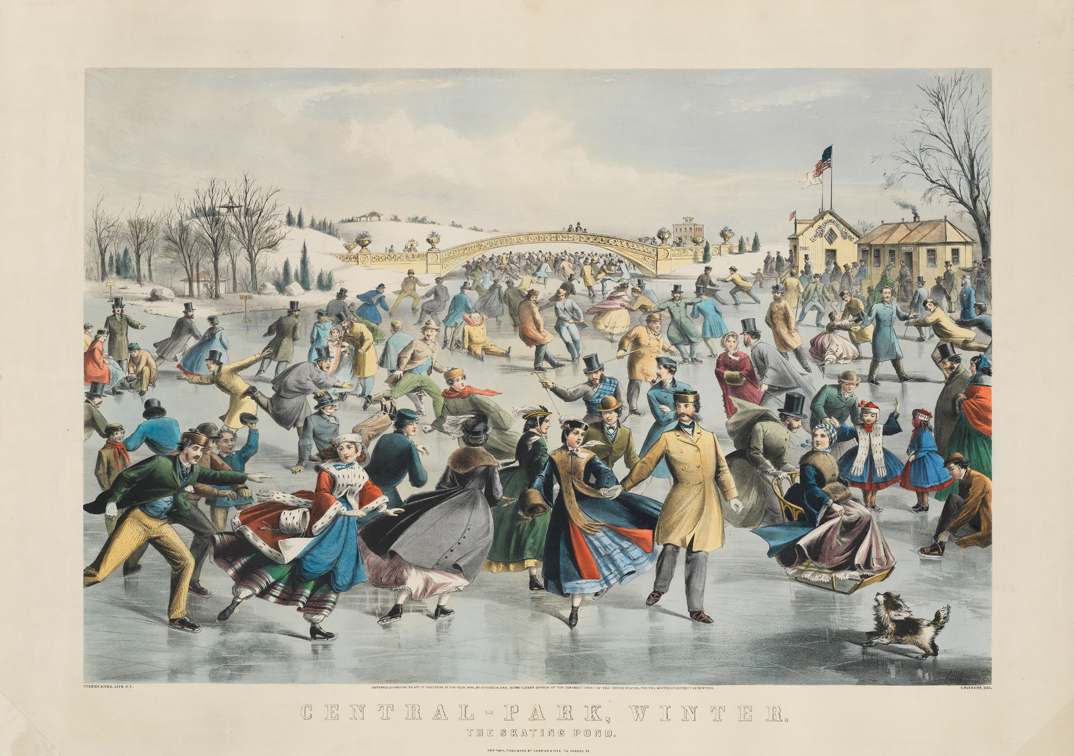
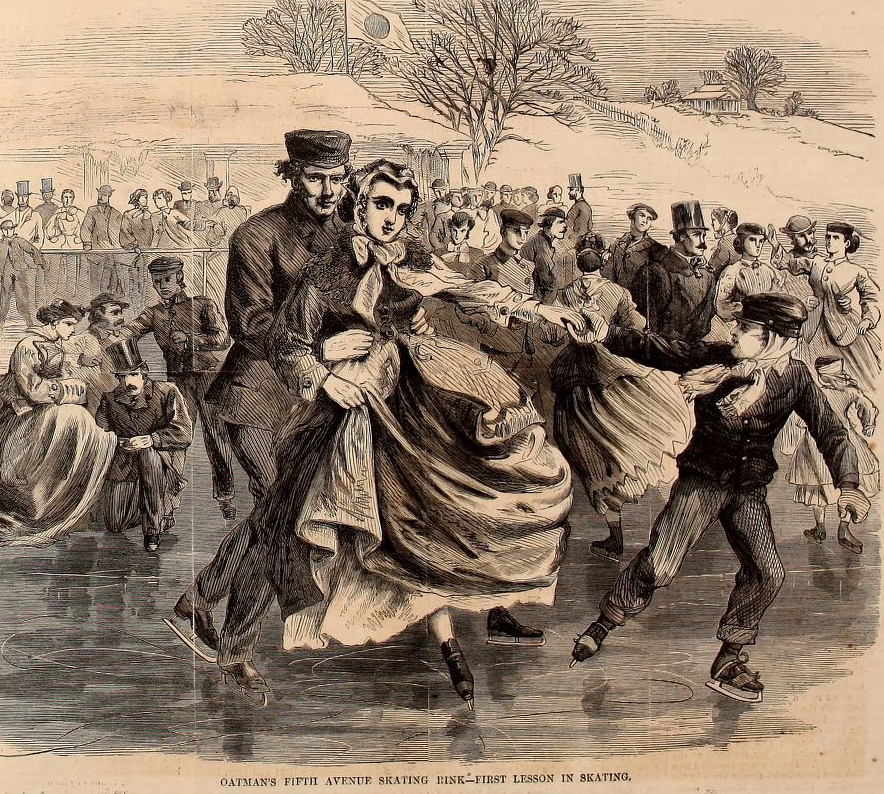
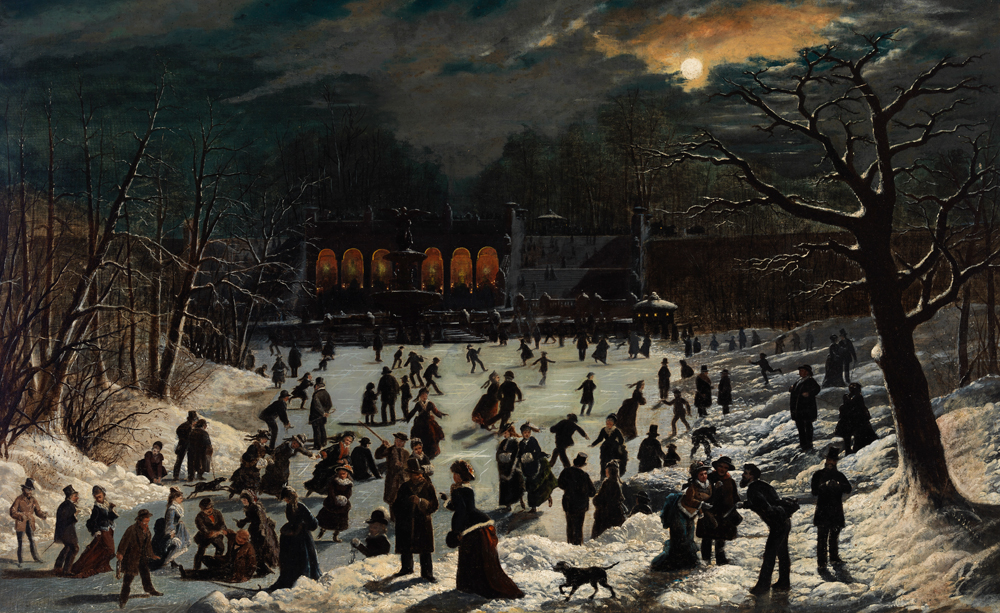
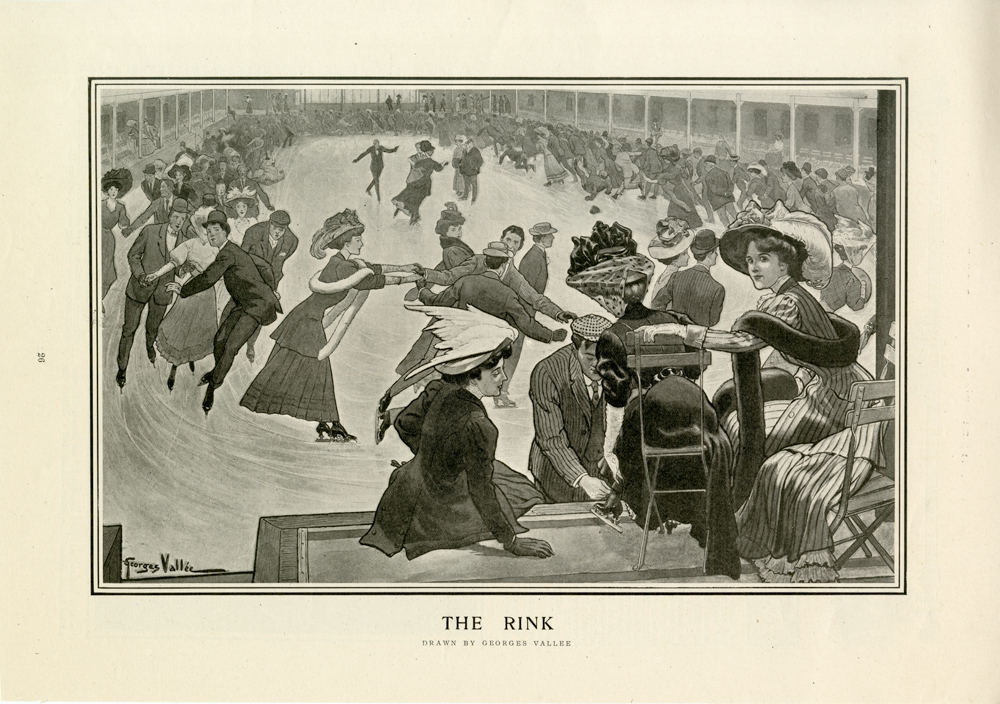
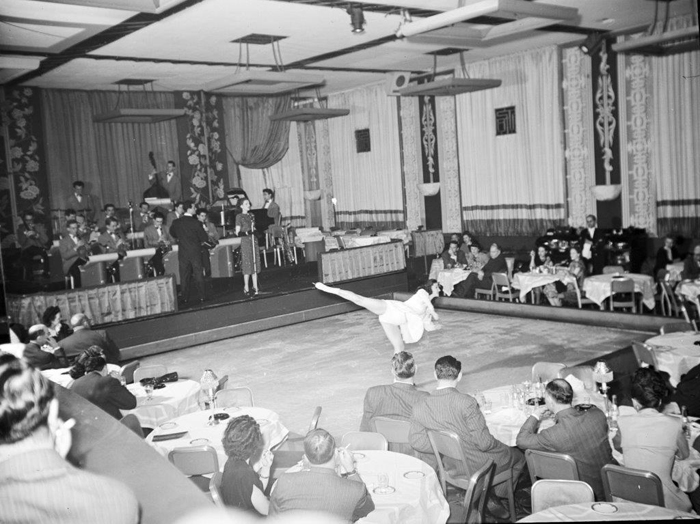
![A museum photo by William Auerbach- Levy (1889- 1964) of [Skippy Baxter and Eileen Seigh in Howdy, Mr. Ice of 1950].](https://www.mcny.org/sites/default/files/styles/mcny_col_3_thumbnail/public/64_100_2141_1.jpg?itok=bsJ7t7Vl)
![A museum photo by Wurts Bros of [Mushing at the North American Winter Sports Show] taken in 1936.](https://www.mcny.org/sites/default/files/styles/mcny_col_3_thumbnail/public/X2010_7_2_06962.jpg?itok=BMO-MlgE)

